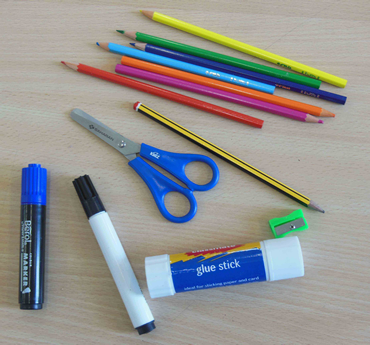
|
Social glue June 7th 2013 "If you want a child to learn make sure he has a friend" Johnson and Johnson Children need to feel part of this new community, that is your classroom and your school. We want them to have as many positive interactions as possible every day. But, because we have so little shared language we all find it hard. If children have no way of indicating their needs they may resort to physical solutions, which can all too quickly led to negative labels, alternatively it can led to physical discomfort. So teach, model and practise some body language and gesture e.g the BSL gesture for toilet is to move the long finger on the dominant hand up and down slightly against the shoulder. You can also create or buy communication fans, some designed to express physical needs and some emotional needs. A link to these will be popped into the filing cabinet. I do like to start, as we all do, with labelling the environment, so as well as the obligatory tour of the school and pointing out places where help can be found - e.g speakers of the same language, I try and acquaint children with the equipment they will find in the classroom. I put together a small pack with a selection of classroom equipment. I play a game called "can I have?", though game is probably too strong a word. I teach the names of the objects - then I find a willing partner and I ask "can I have a pencil?" and thank them, we model it a few times then I try with my new child. Once they realise that all I want is an object, things usually go quite fast. This is, in my view, a lot better than the worksheet based variations with sticking and matching words because there is practice in the kind of language which commonly occurs around classroom vocabulary. It also practices a pathway which will ease social interaction. Once you say "Can I have?" in the dinner hall people start to be a lot nicer to you. In the second drawer of the filing cabinet you will find a PDF of this activity, in case you want to ask another adult to do it for you - schools these days don't allow much time for explaining to our colleagues. Once some children know how they always do it in a few minutes. A word of warning. Scissors. Not all children have had good hands-on prior experience of scissors. Cutting human hair is very satisfying, especially if you have a good fringe. Nursery teachers know this and make sure that children rarely go home with a new hairstyle, older children have got it out of their system. You may want to run a supervised cutting experience to get it out of your new arrivals system. 6 or 7 art straws spread across the hand and snipped off gives a satisfying experience, as does cutting along the fold to make paper lanterns, and attempting to make a feather from a piece of paper - draw the feather outline, then snip in as close as you can to nearly the middle. With care you can make a nice fluffy feeling feather.
|
|
|





